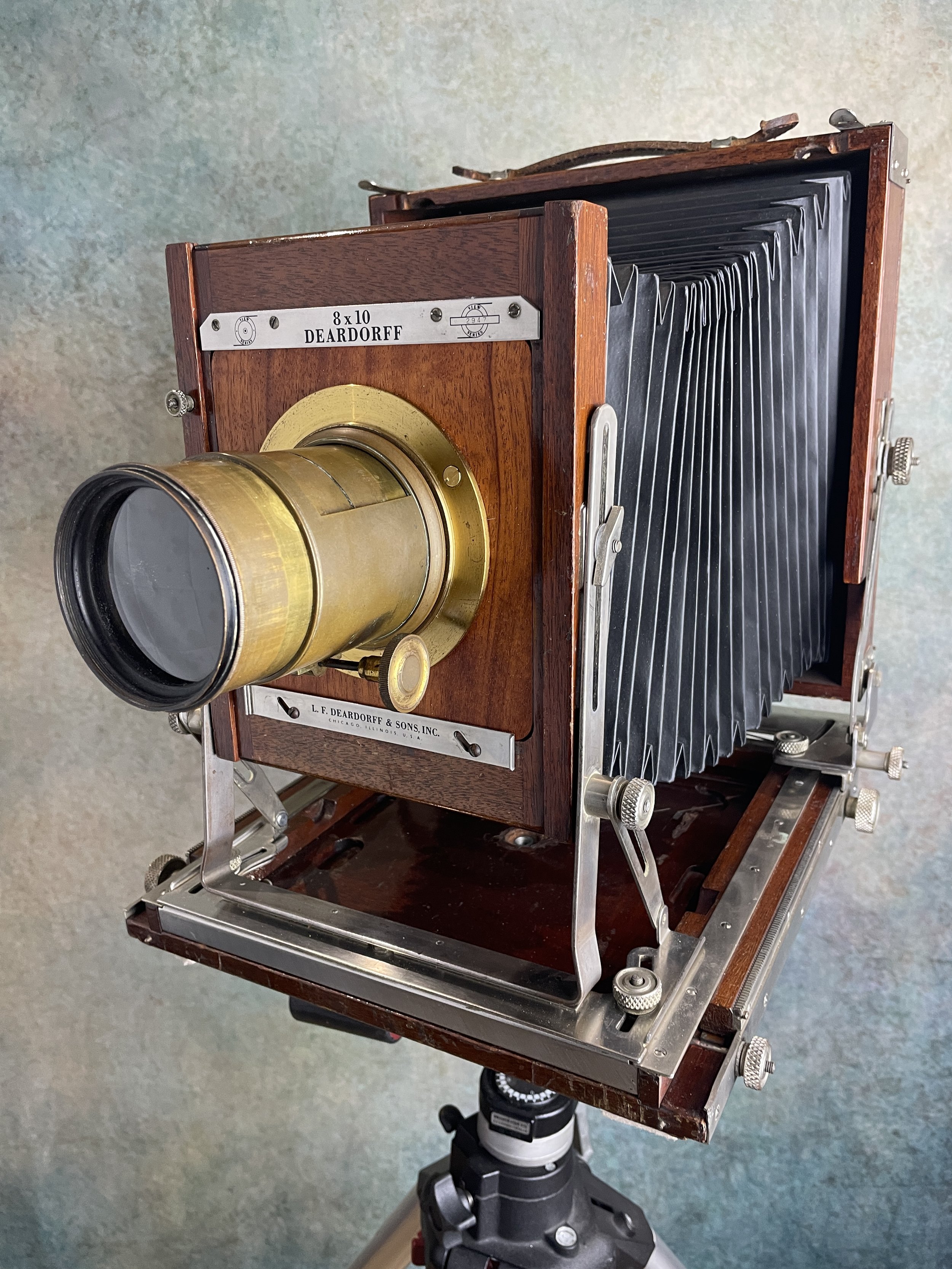Wet Plate Collodion
Background
The wet plate collodion process was invented by Frederick Scott Archer in 1851. It was the first photographic process that allowed copies of the original images to be made simply..
A major disadvantage is that collodion is not very sensitive. An enormous amount of light is needed to make a good exposure. This is not so difficult in bright sunlight outdoors, when exposures can be as short as one or two seconds. In the studio powerful continuous and/or flash lights are essential.
Despite its disadvantages, because the photographer has to coat a plate, sensitise it, take the photograph and develop it within about 15 minute, wet plate collodion became enormously popular. It was used for portraiture, landscape work, architectural photography, and art photography.
Studio and Location Portrait Sessions
I have a studio and darkroom at NR2 4DP, and offer portrait sittings for individuals.. Couples are possible, but much more difficult, so prices are by negotiation following discussion.
Similarly, by negotiation, I may be able to work on location using a portable darkroom.
If you are light-sensitive, such as having epilepsy, I sadly cannot accept a booking. The strobe lighting I use is too dangerous.
What to expect
You will need to set aside one or two hours, and be comfortably dressed. Contrasty tops work well. All black does not. Specs are difficult, and variable tint lenses a no-no.
Individuals may be accompanied by just one adult, because space is at a premium. After a brief chat with a coffee or whatever we’ll go to the studio and I’ll explain the process and test your pose and comfort levels with the lights.
You will have to stay still for up to 10 seconds while the image is being formed.
If that’s OK then I’ll prepare a plate in the darkroom, which you can watch, and we’ll then confirm the pose, take the shot and you can watch it being developed.
Your plate and/or prints will be ready for collection within 5 working days. Delivery is £10.00 to UK mainland addresses.
Each plate is also scanned at high resolution with copies delivered to you on a USB stick free of charge.
The copyright in the image/s will remain with me, but you will free to use them for your own social and business purposes, but not to sell copies of rights to them.
5x4” plates
A single 5x4” wet plate portrait on glass or metal is £50:00. Each additional pose or plate is £35.00.
A professional quality ‘Gliceée” print to 10x8’“ on A3 archival paper is £20.00.
A silver gelatin darkroom enlargement of a single 5x4” glass plate (metal plates cannot be darkroom enlarged without a lengthy and expensive process) to 10x8’ size on 16x12” paper is £35.00. Palladium toning is £10.00 per print.
10x8” plates
These are four times the size of 5x4”, and are much more difficult to render successfully.
A single 10x8” wet plate portrait on glass or metal is £120:00. Each additional pose or plate is £105.00.
A professional quality ‘Glicée” print to 10x8* on A3 archival paper is £35.00.
A silver gelatin darkroom enlargement of a single 10x8” glass plate (metal plates cannot be darkroom enlarged without a lengthy and expensive process) to 10x8’ size on 16x12” paper is £75.00. Palladium toning is £10.00 per print.
Please use the “Contact” form to arrange an appointment.
